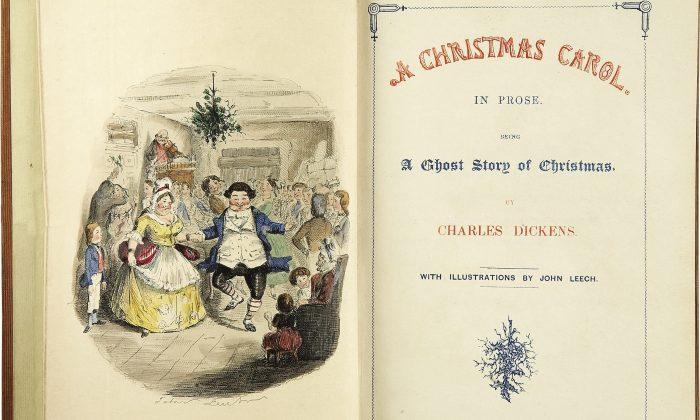We have all heard them, stories about alligators in the sewers of New York City and so on. They are meant to frighten, to make us wary, to make us laugh—nervously.
Put a little thought into the story and it becomes plain that some are social warnings, morality principles, designed to keep us from doing things that society says are sinful and therefore dangerous, and reminding us to conform to society’s norms.
The legend of the murderer with the hook for a hand
A young couple drive out to a popular spot in the woods for a bit of private friskiness. As they drive, there is an emergency radio announcement and the couple stop driving to listen. The report is of an escaped inmate of a local top-security insane asylum. The prisoner is missing a hand and wears a hook in its place. The girl gets nervous and demands that her boyfriend take her home. He thinks she is over-reacting, but speeds to her house anyway. Upon exiting the car, she screams—a bloody hook is hanging from the handle of the passenger door.
The moral of the story: quite obvious really, premarital sex can potentially cause death. It is a warning to teenage girls not to let the boyfriend have his way, not to be weak. Apparently, the legend dates back to the 1950s and may be based on the unsolved 1946 Texarkana Moonlight Murders of several young couples in popular “lovers’ lanes.” In a sense, the 1950s were a conservative time, when the social restrictions for women, which had been lifted to a degree by WW2, were being reintroduced. The results of a romantic rendezvous ruined a girl’s life, and the stigma was never forgotten by society. The legend is designed to make your daughter stay within the confines of a proper, respectable date by fear of death and thus, save her from “social death”.
The legend of the bite with hidden consequences
A woman goes on vacation to a remote tropical rainforest. When she returns, she notices a bite on her cheek that begins to itch. The bite becomes painful and swollen. Her doctor, either accidentally or on purpose, cuts open the swelling and hundreds of tiny spiders swarm out.
The moral of this story: the victim is always female, so some may think it is about vanity; but I say it is about a woman’s place in society. The legend first appeared in 1842, a time when the majority of women were confined to a life within the home as they passed from the control of fathers to husbands and then to their children. It is similar to the legend above—a warning to behave properly by staying within a proper, respectable, sphere of society. The woman in this story has defied convention by travelling, and not just that but also going to someplace “uncivilised.” Although there were some famous female travellers in the 18th and 19th centuries (their exploits make for wonderful reading), it was basically men who went on the “Grand Tour” of Europe and further afield. Adventure was a man’s job, not a woman’s role. There is another version of this tale in which the spiders nest in a woman’s elaborate hairstyle—now that would be a warning about vanity!
The legend of the stranger with the scalpel
A man goes off on an overseas business trip. One night, in his hotel lobby, he gets chatted up by one of the most exotic and beautiful women he has ever met. After one too many drinks they retire to his room. The next morning, he wakes up in the bath, covered in ice. Beside him is a phone with a note to call emergency services or he will die. When the paramedics arrive and check him out, he is told he is the victim of an organ trafficking gang and that one of his kidneys has been removed.
The moral of this story: strangers can never be trusted, especially foreigners. The subtext implies that this would not have happened if he had stayed home and foregone the business trip. Like the spider story, travel may have unexpected consequences and people outside your community (or country) will only hurt you. There is “us” and there is “them”. They are deceptive and untrustworthy. If you cannot stay within your geographical boundaries at least stay within your moral boundaries or you will pay the penalty.
The morals of these tales are reflections of the collections of the Brothers Grimm. I grew up with my grandmother’s late 1800s version of Grimm’s fairy tales. The stories and engravings are some of the most horrific things you can see, but if you read the originals also you see the moral principles.
Rapunzel is banished and her prince is blinded because of her unwed motherhood, after the controlling measures of the witch (or godmother) fail. Like in the tale of the hook, it is better to submit to the overprotective rules of society.
In Snow White the wicked mother, not stepmother, abandons seven-year-old Snow White in the forest and tries to kill her three times (corset, comb, and apple). The mother eventually has to dance in heated iron shoes until she dies. There is no kiss for Snow White before marriage. The vanity of both mother and daughter is emphasized and the mother is punished for her unnatural behaviour towards her daughter—for not being a proper woman—as it in the spider’s nest story.
Red Riding Hood is clearly a tale to remind us that we are safe in our community but not outside it. In some adaptations, Red even gets into bed with the wolf that is dressed in grandmother’s clothes, mirroring the businessman getting drunk and taking the stranger to his room. In the pre-Grimm French version, the wolf eats the girl and grandmother and there is no rescue by a woodsman or hunter. Don’t talk to strangers in literal form or you may pay with your life, as the businessman in the bath nearly did.
There is an underlying theme in the above legends: stray from the correct path and risk the consequences. They remind readers to know their place, to know what behaviour is expected of them.
As for the alligator—I once had a friend in Florida who released his pet alligator ….
Elissa Michele Zacher is a writer with publications in apt: an online literary magazine, The Northeast Poetry Journal, and Freedom Press, amongst others. Her poetry and articles are based on her travels, family, and observations. She is currently a visitor in Ottawa—a subject that has found its way into articles back home in the U.K. edition of The Epoch Times.








Friends Read Free